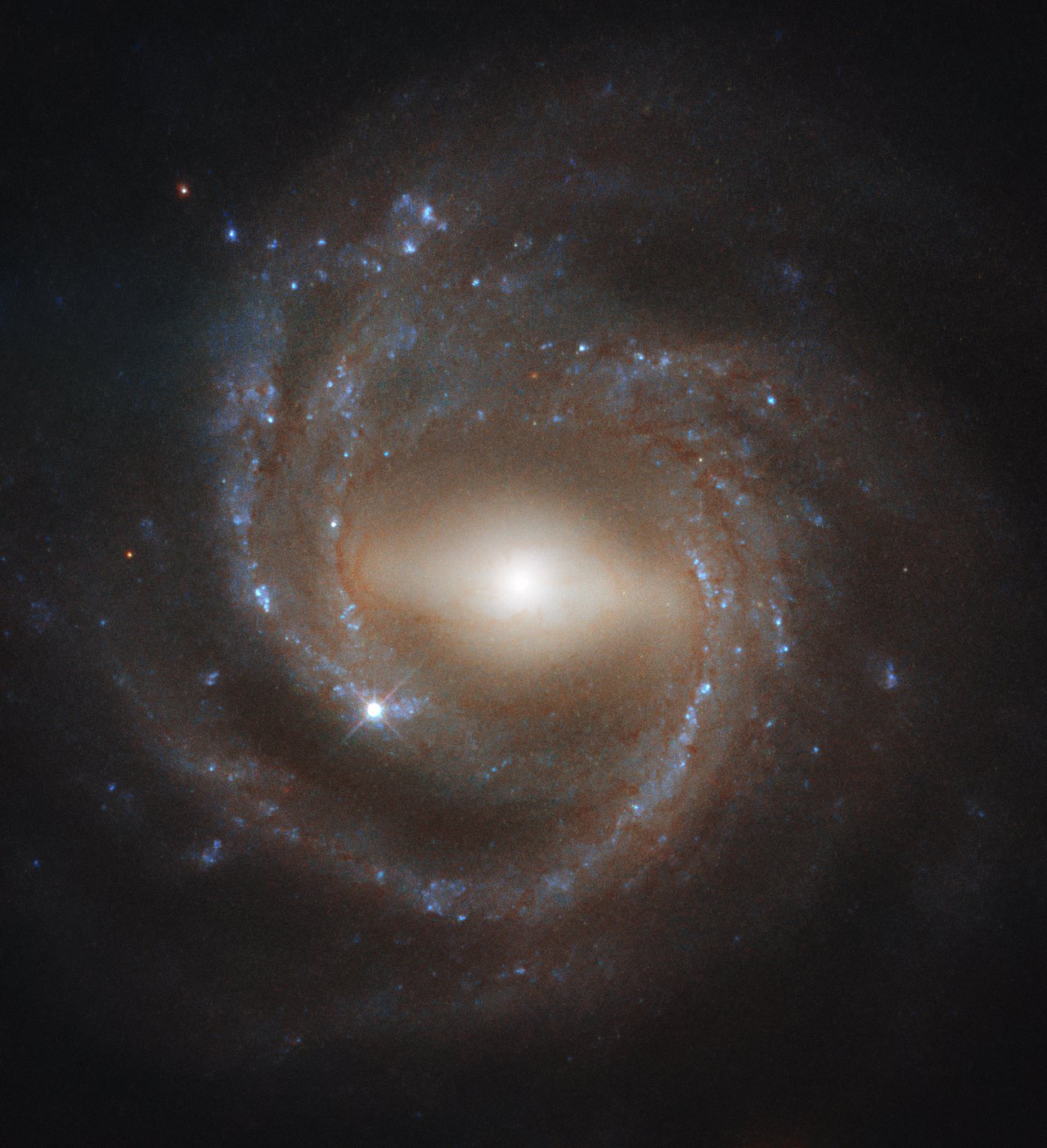
This picture-perfect galaxy is called NGC 7773, and is located in the constellation of Pegasus, 357 million light-years away from Earth. It is in many ways similar to our galaxy, the Milky Way, as both are a type of galaxy called a barred spiral galaxy. You can see the “bar” of bright light running horizontally across the center of the galaxy; a central structure of dust and gas in which new stars are born.
Astronomers believe that bars develop later in the life cycle of galaxies, when the dust, gas, and other material that floats between stars is gradually drawn toward the center of the galaxy due to gravitational forces. Between one third and two thirds of all galaxies have bars, but it has been observed that younger galaxies are less likely to have a bar. This suggests that bars develop over time and that their presence indicates an older galaxy.
Galaxies like NGC 7773 are useful to study because of their similarities to the Milky Way. If we can learn about how these other galaxies develop and mature, we can apply the findings to our understanding of our own galaxy.
This image was captured with an instrument called the Wide Field Camera 3 (WFCS3) on the Hubble Space Telescope. This crucial instrument was installed on Hubble in 2009 and is responsible for capturing many of the beautiful Hubble images that you’ll see across the internet.
Earlier this year, on January 8, the camera unexpectedly shut down. The camera initiated the shutdown process autonomously because data erroneously indicated a problem with its voltage levels. Other telemetry circuits also displayed incorrect voltage levels, which let the scientists know that the problem was with the measuring of the voltage levels, not with the actual voltage.
Fortunately, NASA technicians were able to bring the instrument back online on January 17. They reset the telemetry circuits and other boards, then collected engineering data to ensure everything was running smoothly. After running calibrations for several days, the team were able to bring the instrument back to operations and it has been running successfully since then.
In its life so far, the WFCS3 has taken over 240,000 observations, making it the most used of Hubble’s current instruments.



